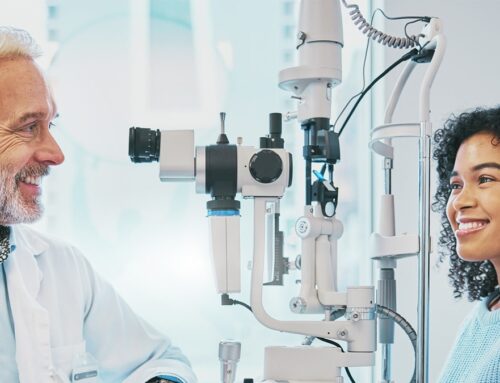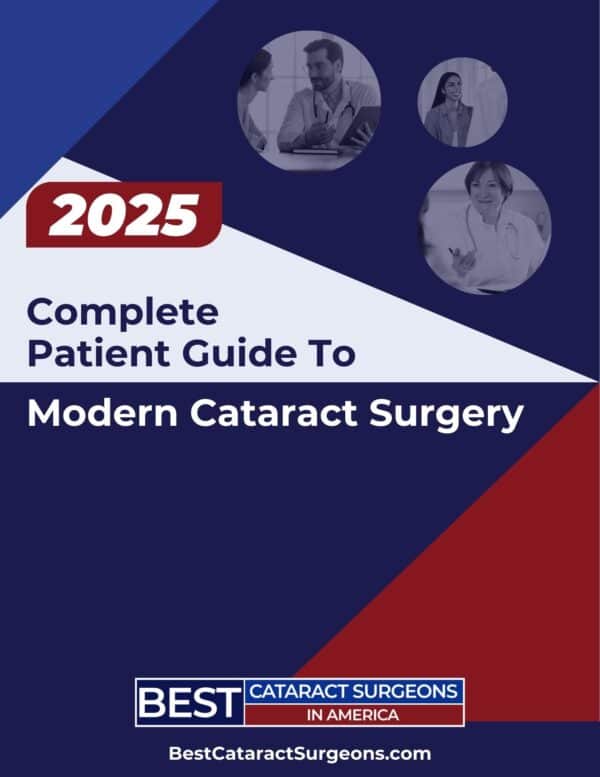There are multiple types of cataracts, but in this article, we will discuss the 3 most common types. Cataracts are a normal part of the aging process. Everyone will develop cataracts if they live long enough. There are many different types of cataracts, but there are 3 types in particular that form the overwhelming majority of cataracts. Patients can also have multiple types of cataracts at the same time. In this article, we’ll discuss the three most common types of cataracts: nuclear sclerotic cataracts, cortical cataracts, and posterior subcapsular cataracts.
The good news is that all of these types of cataracts are treatable, and if detected early, modern cataract surgery is very safe and effective. All of these types of cataracts are treated with the same surgical techniques.
The following are the three types of cataracts you need to know about:
1. Nuclear Sclerotic
This is the most common type of cataract, and it starts from the nucleus, or central part, of the lens. This type of cataract is most commonly age-related. Almost everyone has at least a little bit of nuclear sclerosis by the time they turn 50 years old. Many patients even have a little bit when younger.
This type of cataract tends to cause a very slow and gradual loss of vision. The changes to colors and brightness are often so slow that patients don’t notice the difference for several months to even years. This kind of cataract is usually relatively equal in both eyes. This is because it is age-related, and both of your eyes are the same age!
When you have this kind of cataract, your eye doctor will easily see the natural lens in your eye becoming first yellowish and cloudy, and then a brownish color. You will notice symptoms such as glare, halos, and starbursts around bright lights. This often causes patients impairment while driving. Many patients find out about their cataracts when they fail a driving test. It’s important to have regular eye exams so you don’t put yourself or others at risk while driving.
As this type of cataract grows, your glasses prescription typically changes. It is possible to continue buying new pairs of glasses to keep up with these changes, but this can be expensive, especially if it is only postponing the inevitable, definitive solution to the problem… which is surgery. Whether to try updating your glasses or having surgery is the right decision is a discussion to have with your doctor.
The slow and gradual changes in your lens from a nuclear sclerotic cataract are actually the result of the proteins in your natural lens aging. As they age there is oxidative damage that results in the discoloration of the lens proteins that impact your vision.
2. Cortical Cataracts
Cortical cataracts are when the “cortex” or outer layer of the natural lens becomes cloudy. The opacification in cortical cataracts tends to start on the outside and gradually grow towards the center of your vision. This type of cataract can leave you with fair central vision in good lighting conditions, however, it causes light to scatter which can result in severe glare, halos, and starbursts. Driving at night can be particularly difficult with cortical cataracts. Diabetes, particularly poorly controlled diabetes, is a risk factor for cortical cataracts.
The appearance of the cortical opacities is white. When they become advanced it can be difficult for your surgeon to do some of the typical surgical maneuvers because it’s difficult for your surgeon to see. Just like with other types of cataracts, it’s important to catch these early and have them treated early. As they become more advanced the risks and complication rates of surgery can increase. It will also keep you from being a risk on the highway at night time. Many older adults give up nighttime driving because of cataracts when if they have them fixed, they’ll almost always be able to resume their nighttime driving activities without a problem. If you notice that you are having difficulty when you are driving at night, you might have this form of cataract.
3. Posterior Subcapsular Cataracts
The most common cause of posterior subcapsular cataracts is diabetes and steroid use. Steroid use is not the type of steroids weightlifters use, rather, the type of steroid is called a corticosteroid. This is the type of steroid that’s used as an anti-inflammatory. Many people take this kind of steroid in a variety of forms: asthma treatments and inhalers, nasal sprays, skin creams, joint injections, and pill form for inflammatory conditions. There appears to be a dose-response relationship. That is, patients who take higher doses of steroids or take them for longer periods of time are at more risk of developing a posterior subcapsular cataract, or “PSC”.
This type of cataract often starts in the very center of the lens which can seemingly impact patients’ vision overnight. PSC cataracts can grow very quickly and can occur in younger patients. Because they occur in younger patients, they can quickly cause disruption to work and life activities such as work, driving, and hobbies. One of the key features of this type of cataract is different from the other types because it develops faster than the others and will not take years to be noticeable to the naked eye.
When you have this form of cataracts, you will have changes in your night vision and difficulty reading. If you use glasses, you will need to change the lenses more often than you always do, and as it progresses, you will continue having impaired vision.
These types of cataracts are easily diagnosed with a routine eye exam will, and they can be fixed with surgery. If you often visit the eye doctor, you can catch this cataract before it gets worse, just like any other type of cataract.
One of the keys to all of these different types of cataracts is that having routine eye exams will catch them early, and if you notice symptoms you should have an eye exam right away. All cataracts become more challenging to fix the longer you way. Catching them early is the key to a great outcome!
If you have cataracts and are looking for a cataract surgeon in your area, use our surgeon finder here.











